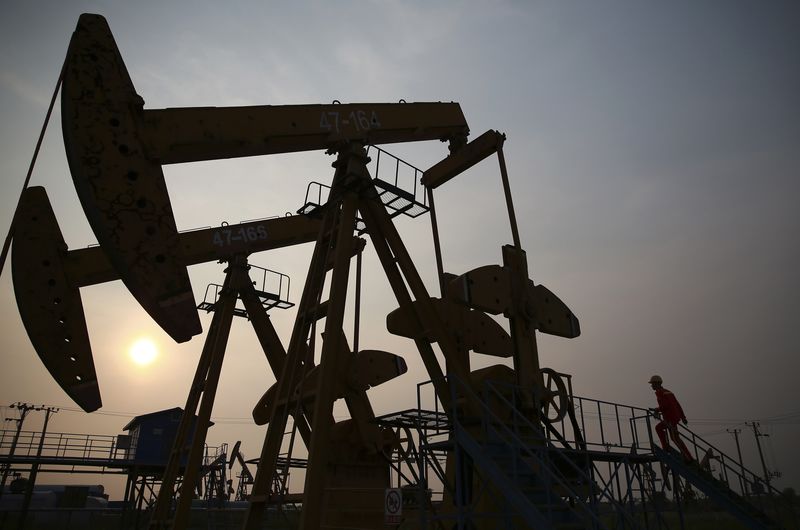By Sudarshan Varadhan
SINGAPORE (Reuters) – Oil prices were on track for their steepest weekly decline since March despite rising in early trade on Friday, on growing worries that higher-for-longer interest rates could stoke a global economic slowdown and curb fuel demand.
Both benchmarks had surged to 2023 highs last week, but has dropped 11.8% and WTI by about 8.8% this week.
On Friday, Brent futures were up 36 cents, or 0.4%, at $84.43 at 0147 GMT, while U.S. West Texas Intermediate crude futures were up 42 cents, or 0.5%, at $82.73, recovering slightly from a 2% decline on Thursday.
“Oil prices are stabilizing after a brutal week that saw a relentless bond market selloff trigger global growth worries,” said Edward Moya, an analyst at OANDA.
Bond investors’ rising concerns around government spending and a ballooning budget deficit in the United States, the world’s top oil consumer, are contributing to a steep sell-off that has pushed Treasury prices to 17-year lows.
“The worst week for crude since March is starting to attract buyers given the oil market will still remain tight over the short-term,” Moya said.
A meeting this week of a ministerial panel of OPEC+, the Organization of the Petroleum Exporting Countries and allies led by Russia, made no changes to the group’s oil output policy.
U.S. Government data this week showed a sharp decline in U.S. gasoline demand, with economic data showing the U.S. services sector had slowed. A key survey revealed that euro zone economy probably shrank last quarter, while a pricey dollar kept a lid on buying capacity of countries around the world.
All eyes on Friday will be on the U.S. monthly jobs report for signs of how strong the economy is.
“The non-farm payroll data tonight, the US CPI, and China’s economic data next week will be key to steering oil’s movements. A resilient economic front can be a short-term positive sign for the demand outlook,” Teng said.
Read the full article here



